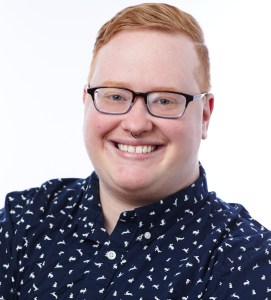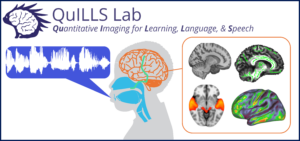
Gabriel Cler
Assistant Professor
Speech & Hearing Sciences
College of Arts and Sciences
gcler@uw.edu
Gabriel Cler Faculty webpage
What is your Research Focus?
Most of us learn to use language without much effort, and we use language throughout our daily lives. This uniquely human ability – understanding and producing spoken language – requires precise integration of neural activity across the brain. In my lab, we study how the brain supports language. In particular, we want to understand what is going on in the brain when a child struggles to learn their first language. This is a very common neurodevelopmental disorder called developmental language disorder (DLD). More than 7% of children struggle to learn their first language (2 children in every classroom), which makes DLD more common than ADHD and autism spectrum disorder, and yet we know very little about it. Importantly, a staggering percentage of incarcerated people meet criteria for DLD – up to 50%. This is not to say that having DLD makes someone more likely to commit a crime, but instead that navigating the criminal justice system requires high-level language, from communicating a cohesive narrative to police and lawyers, understanding constitutional rights, and demonstrating repentance during sentencing – all things that are difficult for someone with DLD, making it likelier that they will receive harsher punishments than their peers with typical language. Part of our motivation in studying DLD is to raise awareness of this common disorder so that children and adults with language differences can learn what is causing their difficulties and access services they need.
In my lab, we’re tackling some big questions in DLD using brain imaging. We want to know: What subtle brain differences do we see in folks with DLD? What differences might cause DLD versus might be caused by a lifetime of language differences? Right now, we’re looking at adults with DLD – we know little about the brains of kids with DLD and even less about adults! We want to know whether adults have motor differences that go along with language differences, like we often see in kids with DLD. What might those differences tell us about underlying neural architecture that is shared between language and motor skills? We use MRI to study the brain in action (functional MRI – which parts of the brain are active when someone listens to speech?) and to see how it’s wired (structural MRI – how is the brain interconnected? What are some of the properties of the tissue in key areas?). We hope to understand more about the causes and consequences of DLD in the adult brain and to use our results to raise awareness of this common language difference.

What opportunities at the UW excite you?
UW has a brand new imaging center, the UW Center for Human Neuroscience, which has been excellent to work with! We’re bringing in some new kinds of sequences and analyses that help us look at properties of brain tissue and also to see how the tongue, law, lips, and vocal tract move when people are talking.